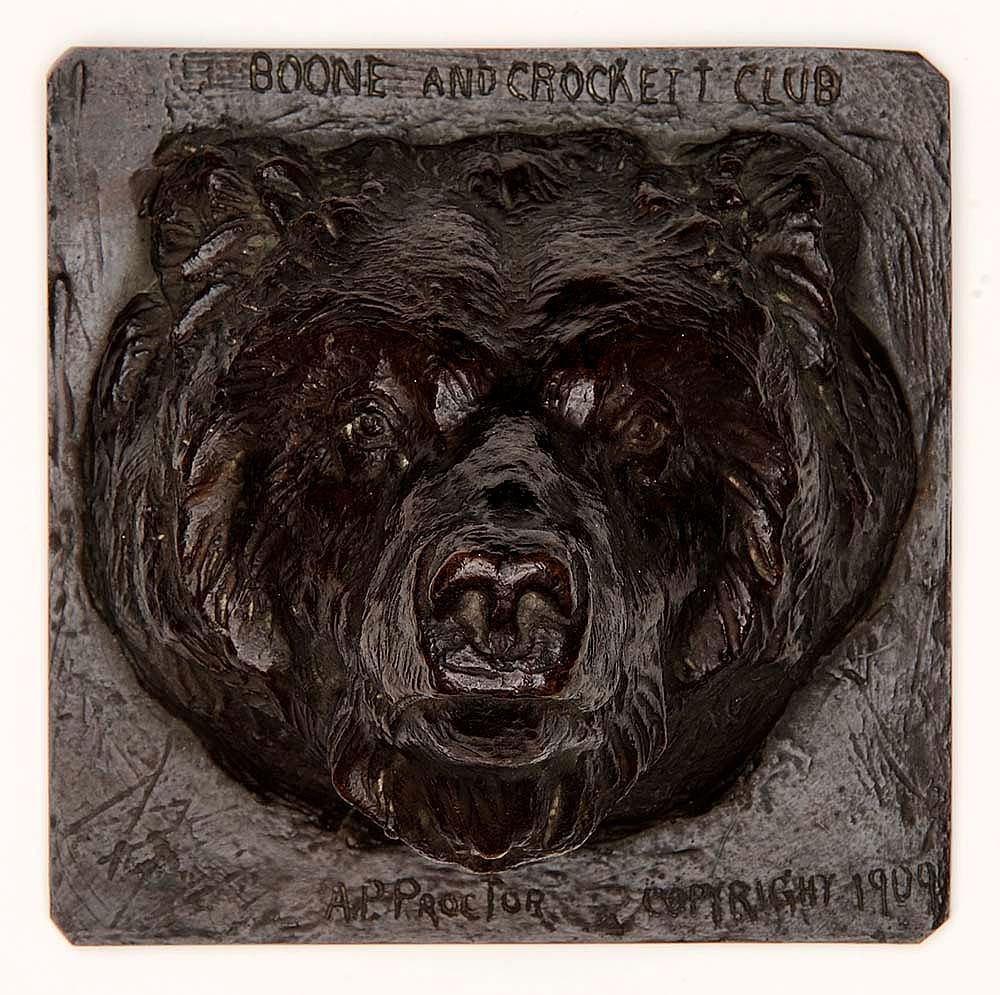
Proctor Museum Donates Collection – Points West Online
Originally published in Points West magazine
Fall 2004
Proctor Museum Donates Collection
Ed. Note: A look back to the acquisition of the Alexander Phimister Proctor Collection following a 2004 exhibition on the sculptor and his work.
By Sarah E. Boehme
The Buffalo Bill Center of the West’s 2004 special exhibition on Alexander Phimister Proctor reaped a long-term benefit for the Center and its audience. Through negotiations to bring Wildlife and Western Heroes: Alexander Phimister Proctor, Sculptor to Cody, the Center formed a friendship with a grandson of the artist, Phimister Proctor “Sandy” Church, who organized the A. Phimister Proctor Foundation and developed an extensive collection of Proctor’s sculpture. Although Church along with the Foundation had founded the A. Phimister Proctor Museum in Poulsbo, Washington, he believed that the sculptor’s work could reach a larger audience through a more established museum. Convinced that the Buffalo Bill Center of the West was the appropriate museum to become the steward of the Proctor Collection, Church and the Proctor Foundation decided to donate the collection to the Center.

The Proctor Collection includes approximately twenty-five bronzes, seventy-five plasters, twenty-five watercolor paintings, twenty etchings and etching plates, forty pencil sketches, and five oil paintings. Included are the Proctor Museum works of art that were selected for the traveling exhibition, such as the elegantly modeled Elk, the Boone and Crockett Club emblem Head of Brown Bear, and the handsome portrait “Sundown,” Nez Perce’s Chief. Other important works, not included in the special exhibition, were to be shipped to the Center in the following year. A notable addition is Bust of Iron Tail, a portrait of the Oglala Sioux man who was a respected warrior and member of Buffalo Bill’s Wild West troupe.

One of the most significant treasures of the Proctor Collection is the monumental plaster used in the modeling of the heroic-sized bronze sculpture of Theodore Roosevelt. The Proctor Museum acquired the separate pieces composing this plaster from the North Dakota Historical Society, where they had been stored for many years. Two pieces, the bust of Roosevelt and the horse’s head, were featured in Wildlife and Western Heroes: Alexander Phimister Proctor, Sculptor. In the future the entire Theodore Roosevelt plaster will be reassembled [ed. note: the reassembly was completed in 2009, when the Center’s Whitney Western Art Museum was reinstalled.]
The Proctor Collection is a rich resource for study and research because in addition to works of art it also includes documentary material and artifacts from the artist’s life. The archival material has manuscripts for the artist’s autobiography, notebooks and account books, clippings, scrapbooks, correspondence, and photographs. Proctor’s sculpting and modeling tools are part of the holdings as well as personal effects including Native American clothing that he collected for his research.

The addition of the Proctor holdings enriches the Whitney Western Art Museum’s presentation and in-depth interpretation of this important sculptor. Given the breadth of the Proctor Collection, the Whitney planned to create a reconstructed Proctor studio [completed in the 2009 reinstallation]. This studio adds a new element to the museum’s special focus on artist’s studios because it can emphasize a sculptor and the process of making bronzes.
Since its early history, the Whitney Western Art Museum has made artist’s studios a cornerstone in its presentation of western art. The Frederic Remington Studio presents a reconstruction of the artist’s room that Remington had built onto his New Rochelle, New York, residence and which he filled with the western clothing and objects that he used as props and as inspiration when he created his major interpretations of the American West. In the W.H.D. Koerner Studio [rotated off exhibit when the Proctor Studio exhibit was installed in 2009] can be seen the collections and methods used by Koerner in making myriad illustrations of the West for popular publications in the early twentieth century. For Joseph Henry Sharp, the Center shows the artist’s actual cabin and the designed living space he created to inspire his paintings in the West.
Ed. Note: for additional content relating to Proctor and his work, click the below links
- Alexander Phimister Proctor
- Forged and Founded: Western American Sculpture, Alexander Phimister Proctor
- Object Spotlight: Proctor’s Rough Rider
Post 270
Written By
Nancy McClure
Nancy now does Grants & Foundations Relations for the Center of the West's Development Department, but was formerly the Content Producer for the Center's Public Relations Department, where her work included writing and updating website content, publicizing events, copy editing, working with images, and producing the e-newsletter Western Wire. Her current job is seeking and applying for funding from government grants and private foundations. In her spare time, Nancy enjoys photography, reading, flower gardening, and playing the flute.










